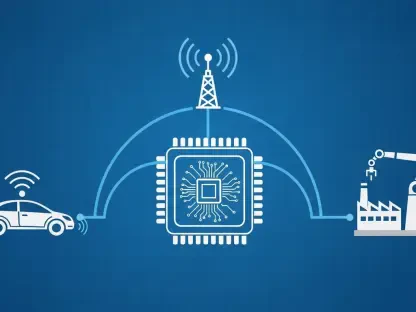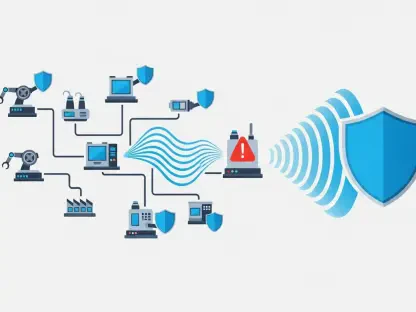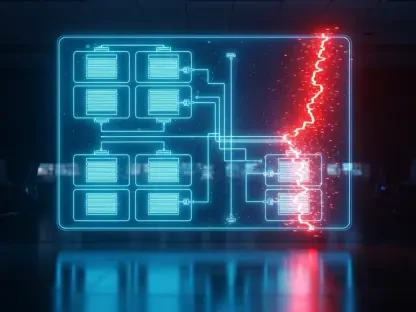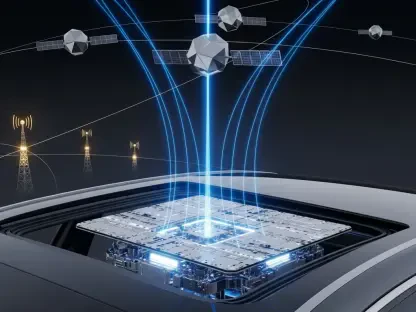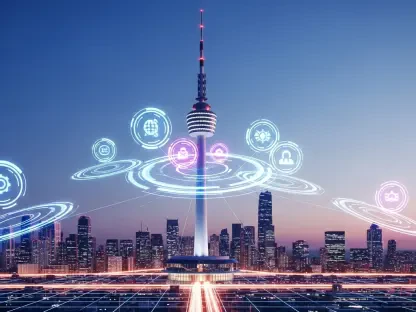In an era where technology shapes every aspect of daily life, smart buildings have emerged as the gold standard for modern real estate, offering environments where connectivity, automation, and efficiency are seamlessly integrated. These properties, whether towering office complexes or upscale residential units, are no longer judged solely by location or design but by their ability to deliver cutting-edge digital experiences. At the forefront of this revolution stands Optical LAN (Local Area Network), a fiber-optic-based networking solution that is redefining how buildings function and compete in a tech-driven market. As tenant expectations soar, with demands for high-speed internet and smart systems becoming non-negotiable, property stakeholders are compelled to rethink traditional infrastructure. Optical LAN not only addresses these needs but also sets a foundation for future innovation, making it a pivotal element in the evolution of smart buildings. This transformation is not just about keeping up—it’s about staying ahead in an increasingly connected world.
The Need for Advanced Connectivity in Smart Buildings
Digital Expectations in Modern Real Estate
The landscape of real estate has shifted dramatically, with digital capabilities now playing a central role in determining a property’s value and appeal to prospective tenants. In today’s market, whether it’s a luxury multi-dwelling unit or a state-of-the-art corporate hub, buildings equipped with high-speed connectivity and intelligent features lease faster, retain occupants longer, and justify higher rental rates. This trend reflects a broader cultural change where technology is no longer seen as an added bonus but as a fundamental requirement for comfortable and efficient living or working spaces. Tenants expect instant access to robust internet for remote work, streaming, and smart home or office systems that enhance convenience and security. For property owners, meeting these expectations is critical to maintaining a competitive edge, as failure to provide such amenities can result in vacant spaces and diminished returns. The pressure to adapt is palpable, pushing the industry toward infrastructure solutions that can support this digital-first mindset.
Beyond tenant satisfaction, digital readiness also impacts a building’s market positioning and long-term viability in an era of rapid technological advancement. Investors and developers are increasingly prioritizing properties with integrated smart technologies, recognizing that such features attract high-value clients and contribute to sustainability goals. A building’s ability to offer seamless connectivity directly correlates with its perceived modernity and functionality, influencing decisions from leasing agreements to property valuations. Moreover, regulatory bodies and green building certifications are beginning to emphasize digital infrastructure as part of environmental and operational efficiency standards. This convergence of tenant demands and industry benchmarks underscores the urgency for real estate stakeholders to upgrade their networking systems. Without a robust digital backbone, even the most architecturally stunning buildings risk obsolescence in a market that values connectivity as much as physical space.
Shortcomings of Copper-Based Systems
Traditional copper-based LANs, once the backbone of building connectivity, are proving woefully inadequate in the face of modern technological demands. Designed for a time when internet usage was limited to basic browsing and minimal device connectivity, these systems buckle under the strain of today’s data-intensive applications. Smart buildings rely on a plethora of connected devices—ranging from IoT sensors for energy management to advanced Wi-Fi 7 networks and centralized security platforms—that require substantial bandwidth and low latency. Copper infrastructure, with its limited capacity and susceptibility to interference, creates bottlenecks that hinder performance and reliability. This mismatch not only frustrates tenants who expect flawless digital experiences but also hampers building management systems critical for automation and efficiency. The inadequacy of copper is a glaring obstacle in realizing the full potential of smart building technology.
Furthermore, the physical limitations of copper-based systems compound their obsolescence in contemporary real estate settings. With a maximum effective range of about 100 meters before signal degradation, copper necessitates frequent use of signal boosters and multiple telecommunications closets, consuming valuable space that could be repurposed for revenue-generating purposes. Additionally, these systems demand significant power and cooling resources to operate, inflating operational costs and contradicting the sustainability goals many smart buildings aim to achieve. As the number of connected devices continues to grow exponentially, copper LANs simply cannot scale to meet future needs without extensive and costly overhauls. This reality forces property managers and owners to confront a critical decision: cling to outdated technology at the risk of falling behind or invest in a more capable solution that aligns with the trajectory of digital innovation in the built environment.
Optical LAN: The Future of Building Networks
Unveiling Optical LAN Technology
Optical LAN emerges as a transformative solution to the challenges plaguing traditional networking in smart buildings, leveraging fiber-optic technology to deliver unparalleled performance. Unlike copper-based systems, Optical LAN simplifies network architecture by utilizing a centralized optical switch connected through single-mode fiber optic cables to distributed modems across a property. This streamlined design reduces the number of active components, minimizing points of failure and enhancing overall reliability. Capable of supporting vast campuses or compact high-rises, this technology provides a scalable framework that adapts to varying building sizes and connectivity needs. By transmitting data via light, Optical LAN achieves speeds and distances unattainable by copper, ensuring that every corner of a property remains connected without compromise. This innovation marks a significant leap forward, equipping buildings with the digital infrastructure necessary to thrive in a hyper-connected world.
The adaptability of Optical LAN further solidifies its role as the cornerstone of modern building networks, catering to both immediate and long-term digital demands. Its ability to handle multiple wavelengths over a single fiber strand allows for easy upgrades—speeds can escalate from 10G to 25G or even 100G without replacing existing cabling. This future-proof design is particularly valuable in an era where technological advancements unfold at a rapid pace, ensuring that buildings remain relevant without frequent, costly renovations. Moreover, the technology’s compatibility with diverse applications, from tenant internet services to building-wide automation systems, makes it a versatile choice for property stakeholders. By eliminating the clutter of traditional networking hardware, Optical LAN not only boosts operational efficiency but also redefines how connectivity is integrated into the very fabric of smart buildings, paving the way for seamless digital experiences.
Key Benefits of Fiber-Optic Solutions
The advantages of Optical LAN extend far beyond mere speed, offering a multifaceted solution that addresses critical needs in smart building operations. One of its standout features is energy efficiency, consuming up to 40% less power than copper-based systems due to fewer active components, which also reduces cooling requirements. This translates to lower electricity bills and aligns with green building standards, enhancing a property’s environmental footprint—a factor increasingly important to tenants and regulators alike. Additionally, fiber’s immunity to electromagnetic interference and inherent security features, such as built-in encryption, make it a safer choice for sensitive applications like surveillance and access control. These benefits collectively position Optical LAN as a technology that not only elevates connectivity but also supports broader goals of sustainability and safety in modern real estate.
Another compelling aspect of Optical LAN is its cost-effectiveness and longevity, making it a prudent investment for property owners focused on long-term value. With a lifespan exceeding 50 years when paired with single-mode fiber, this technology minimizes the need for frequent infrastructure upgrades, reducing capital expenditure over time. Its extended reach—capable of transmitting data up to 20 kilometers without signal loss—eliminates the need for intermediary equipment, freeing up space previously occupied by telecom closets for more productive uses. Furthermore, the flexibility to allocate bandwidth dynamically ensures that different areas of a building, from high-density workspaces to standard residential units, receive tailored connectivity without overextending resources. This combination of durability, spatial efficiency, and adaptable performance underscores why Optical LAN is becoming the preferred choice for forward-thinking real estate stakeholders.
Practical Implementation and Strategic Value
Simplifying the Transition
Adopting Optical LAN may seem like a complex endeavor, but the process is designed to minimize disruption and accommodate a range of property types, from new constructions to historic renovations. Existing endpoints such as Wi-Fi access points, IP cameras, and HVAC controllers can often remain in place, with only the underlying copper cabling and switches requiring replacement. This targeted approach ensures that tenants experience little to no interruption during the upgrade, preserving operational continuity and satisfaction. Even in older buildings with spatial constraints, the compact footprint of fiber-optic systems allows for seamless integration without the need for extensive structural modifications. Property managers can thus embark on modernization efforts with confidence, knowing that the transition to Optical LAN prioritizes practicality alongside performance.
Equally important is the centralized architecture of Optical LAN, which streamlines maintenance and future updates, further easing the shift from traditional systems. Unlike copper networks that require dispersed equipment and frequent manual intervention, fiber-optic setups consolidate control into a single hub, reducing the time and cost associated with troubleshooting and enhancements. This efficiency is particularly beneficial for multi-tenant environments where downtime can impact numerous occupants simultaneously. Additionally, the technology’s scalability means that as digital demands grow, adjustments can be made swiftly by adding new wavelengths rather than overhauling infrastructure. For building owners hesitant about the logistics of upgrading, these features offer reassurance that Optical LAN not only fits within existing frameworks but also provides a sustainable path forward, ensuring properties remain equipped for evolving technological landscapes.
A Competitive Edge for Property Owners
Optical LAN transcends its role as a mere technical upgrade, emerging as a strategic asset that redefines a building’s market position and operational prowess. By delivering reliable, high-speed connectivity, this technology enhances tenant experiences, fostering satisfaction and loyalty in an era where digital access is paramount. Smart features powered by robust networks—such as automated lighting, climate control, and security systems—elevate a property’s appeal, distinguishing it from competitors still reliant on outdated infrastructure. This differentiation is crucial in attracting discerning clients, whether corporate entities seeking efficient workspaces or residents prioritizing modern conveniences. For owners, the result is not just higher occupancy rates but also the ability to command premium pricing, reflecting the added value of a digitally advanced environment.
Looking beyond immediate benefits, the adoption of Optical LAN aligns property owners with broader industry trends toward sustainability and innovation, securing their investments for the future. The energy savings and reduced physical infrastructure associated with fiber-optic networks contribute significantly to meeting environmental targets, often improving scores in green building assessments. This commitment to eco-friendly practices resonates with tenants and stakeholders who value corporate responsibility, further enhancing a property’s reputation. Moreover, the long-term cost reductions and scalability of Optical LAN ensure that buildings remain adaptable to technological shifts without recurring financial burdens. Reflecting on these advancements, it becomes evident that embracing this technology is a forward-thinking decision, positioning properties as leaders in the smart building revolution and setting a benchmark for real estate excellence.


